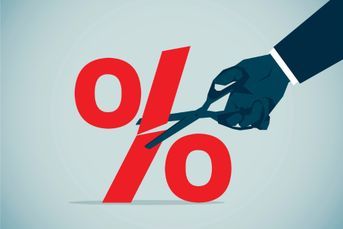What to do with your 401(k) after you leave your job
Fees in 401(k)s and IRAs vary greatly — and they could be silently killing your investment returns.
Freedom of choice can feel like more of a burden than a benefit when figuring out what to do with a 401(k) after leaving a job or retiring. Do you let it stay at your old company (if an ex-employer lets you), roll it into a new company’s plan or stash it in an IRA?
With the average worker changing jobs every 4.6 years and 10,000 baby boomers turning 65 daily, the decision is one many people face multiple times over a career. It’s a big deal because fees are the silent killer of investment returns, and fees in 401(k)s and IRAs vary greatly.
If you’re in a low-fee plan that has more than $1 billion in assets and offers a good selection of index funds and target-date funds on top of actively managed funds, staying put may be a good option. A company savings plan will have more built-in investment safeguards than a wide-open IRA, as well as options like stable value funds you can’t find outside the plan.
Plan investment menus and fees differ a lot even within plans of similar size, however, and funds in an old 401(k) may not be the best ones for you. Also, keeping money in a bunch of old 401(k) plans adds layers of fees. Here are some guidelines and benchmarks to help figure out the best home for your money.
THE RETURNS
A recent study found that defined contribution plans such as 401(k)s had higher long-term investment returns than IRAs. Defined contribution plans had an average geometric return of 3.1% from 2000 to 2012, according to research (PDF) by Alicia Munnell and others at the Center for Retirement Research. A lot of money in 401(k)s, the study noted, gets rolled over into IRAs, which had a return of 2.2%.
Part of the reason for those lower returns is probably due to the 11% of assets that traditional IRAs (as in, not Roth IRAs) had in money market funds; defined contribution plans had about 4% in the funds.
THE FEES
Some of that return gap, though, comes from higher fees on products in IRAs. Some advisers are better compensated for selling investments with higher fees. They may favor actively managed mutual funds or more complex investments over lower-cost index funds or exchange-traded funds, for example.
Over 30 years, conflicted advice can cause a retiree who rolls over 401(k) money into an IRA to lose an estimated 12% of savings, according to a 2015 study by President Obama’s Council of Economic Advisers (CEA). Absent that financial toll, the same account would last five additional years, the study concluded.
How much is too much in fees? In general, investment fees in big plans shouldn’t top 1%. The asset-weighted expense ratio on a domestic equity mutual fund in a 401(k) was, on average, 0.54% in 2013, according to a report from BrightScope and the Investment Company Institute. For plans with $1 billion or more in assets, it was 0.44%. The equity index fund average is about 0.13%.
Ideally, a large plan will use its buying power to negotiate lower institutional share class pricing on funds — in some cases, well below 0.10% — something you may not get in a smaller 401(k) plan or an IRA.
https://s32566.pcdn.co/wp-content/uploads/assets/graphics src=”/wp-content/uploads2016/01/CI10325016.JPG”
CONFLICT OF INTEREST
An advantage of 401(k) plans is the duty, under the Employee Retirement Income Security Act, to put participants’ interest before its own when managing the plan. This is what is called the “fiduciary standard.” Not all plans live up to that standard, however.
A wave of class-action lawsuits in recent years alleged, among other things, excessive fees in some plans, as well as conflicts of interest in plan pricing. Fear of liability has spurred many companies to improve the pricing and makeup of their fund offerings.
LEGAL PROTECTIONS
IRAs and 401(k)s also offer disparate legal protection from creditors. Both types of accounts are protected from creditors in the event of a bankruptcy. But IRAs aren’t protected the way 401(k) assets are in civil lawsuits, and the amount of money that can’t be touched by creditors can vary greatly from state to state.
GETTING AT YOUR MONEY
Ease of access is a further consideration. Money in a 401(k) can be taken out without penalty before age 59 1/2 if a plan participant has a job change and is at least 55. Withdrawing money from an IRA before age 59 1/2 mandates a 10% early withdrawal penalty, as well as income tax on the amount withdrawn.
Learn more about reprints and licensing for this article.








